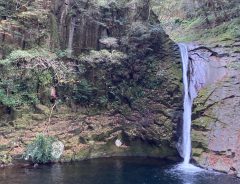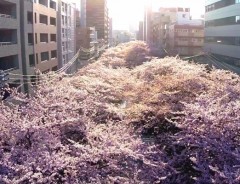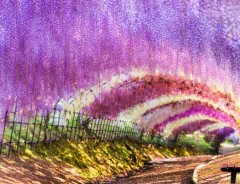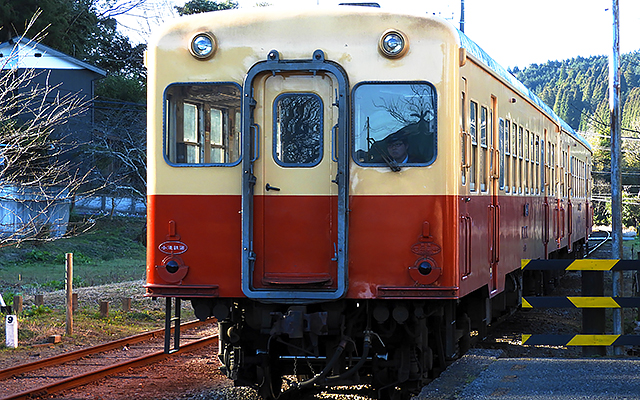- Tags:
- biking / boating / Boso Peninsula / Chiba Prefecture / Countryside / diesel engine / fishing / Goi / Goi Station / Hiking / Ichihara City / idyllic / JR / Kominato Line / Kominato Railway / Kominato Railway Co. Ltd. / Lake / Nature / old-fashioned / Retro / rural / Satoyama Torokko / Scenic / steam locomotive / Takataki / Takataki Dam / Takataki Lake / Takataki Shrine / Takataki Station / Uchibo Line
Related Article
-

Mysterious tree looks like it belongs in a scene from Princess Mononoke
-

Japan’s great fall foliage spots: Akame 48 Waterfalls
-

Morinaga’s Milk Caramel: Japan’s most delicious caramels enjoyed since 1913
-

Drone Captures Breathtaking Bird’s-Eye-View Of 800 Sakura Trees In Tokyo
-

5 “Nature-Made Tunnels” In Japan Too Beautiful Not To Walk Through
-

Hiking Kyoto’s Mt. Hiei



Hakone, Yokohama, Kamakura and Enoshima Island are some of the common day-trips which typically get mentioned in tourist guides and travel sites. However, since these destinations are so popular, they are often crowded with other tourists. Takataki Lake, in the middle of the Boso Peninsula in Chiba Prefecture, on the other hand, is a great getaway little known to foreign tourists but ever so worthwhile to visit, as our Grape Japan staff discovered over the New Year holiday earlier this month.
Beautiful natural scenery, pleasant walks, biking roads, bass fishing, pleasure boats, Takataki Shrine nested in a tall foresty hill overlooking the lake, a surprising museum of contemporary art, an Italian restaurant with a wood furnace making wonderful pizzas with locally sourced ingredients and with amazing views of the lake, and not far away, a theme park and zoo famous for elephants are just some of the attractions of the area.
We will introduce them in Parts 2 and 3 of this special feature, but in the meantime, let's take a look one of Japan's most famous local railway lines, and the best way to travel to the Takataki Lake area, the Kominato Line (operated by the Kominato Railway Company).
Source: (C) Grape Japan
The Kominato Line, which has been operating since 1917, just celebrated its 100th anniversary. It uses vintage-style diesel cars all manufactured in the 1960s and 70s, and the trains have one carriage, at most two, with the exception of the Satoyama Torokko, a replica of a steam locomotive which consists of four carriages.
For a relatively short distance of 39.1 kilometers, the Kominato Line runs through 18 quaint stations, many of them unmanned and quite old. In fact, the Kominato Line and many of its stations have been named a Registered Tangible Cultural Property and have also won a Good Design Award in 2017. An interesting bit of trivia: If you're a karaoke fan and frequent karaoke establishments in Japan, you may recognize the Kominato Line's characteristic red and cream-colored carriages since the line makes frequent appearances in the background of karaoke videos to evoke nostalgia for old times or country life.
To ride the Kominato Line, you need to take the JR Uchibo Line from Chiba Station and transfer at Goi Station. We recommend you arrive relatively early in the morning to take advantage of the day and since the Kominato Line trains don't run as frequently as JR trains. When you go up the stairs from the JR platform at Goi Station, you will see a passage leading towards the Kominato Line platform.
Source: (C) Grape Japan
Be sure to bring cash with you. If you have been using a Suica or other IC card up to that point, you'll need to tap your card at the console on the right, and then purchase your tickets at the vending machine or at the manned ticket booth since the Kominato Line only accepts cash. Although it is hard to make out from the picture above, there is a map of the Takataki Lake area on the left side of the entrance leading to the Kominato Line platform, which testifies to the area's popularity.
Source: (C) Grape Japan
Once you descend to the Kominato Line platform, you can see the difference between the modern JR lines on the right, and the retro-style Kominato Line carriages on the left.
Source: (C) Grape Japan
If the train has arrived and is waiting at the platform, you can admire the KiHa 200 series diesel cars, built by Nippon Sharyo between 1961 and 1977. As you can imagine, train enthusiasts love the Kominato Line and camera-armed train buffs are often seen on the platform and at many of the stations and even at some crossroads along the way.
Source: (C) Grape Japan
Once you step inside, you'll immediately notice the purring of the diesel engine. If there are no passengers yet, you'll feel as if you've just stepped back into a bygone era when you board the train.
Source: (C) Grape Japan
Source: (C) Grape Japan
Source: (C) Grape Japan
Source: (C) Grape Japan
We were lucky to ride the Kominato Line during the New Year's period since we received a special 100 year anniversary commemorative otoshidama gift envelope containing a 50 yen coin.
Source: (C) Grape Japan
Depending on which train carriage you happen to ride in, you may see artwork displayed inside the train. We were lucky to come across an exhibit of photos taken of the Kominato Line.
Source: (C) Grape Japan
Source: (C) Grape Japan
On a sunny day, the natural beauty of the Chiba countryside is truly enticing as seen through the windows of the train or caught in glimpses at the stations through open doors.
Source: (C) Grape Japan
Finally, after about an hour, we arrived at our destination, Takataki Station.
Source: (C) Grape Japan
Source: (C) Grape Japan
Source: (C) Grape Japan
Another advantage of arriving in the morning is the station looks more moody and charming in the morning light.
Source: (C) Grape Japan
Cats seem to love Kominato Line stations, for some reason. Takataki Station is not as famous as Yorokeikoku Station, which is overflowing with felines, but it has a few, and we found one of them as we arrived that morning.
The trip from Goi Station to Takataki Station takes 42 minutes and costs 920 JPY one way. A discount is available for round-trip tickets and there are also special passes you can purchase at Goi Station if you intend making multiple stops along the way. From Tokyo Station, the entire trip to Takataki Station takes an hour and 45 minutes.
Next week, we'll show you why we took the Kominato Line in the first place! Stay tuned for our continuing report, featuring the beautiful Takataki Lake area.